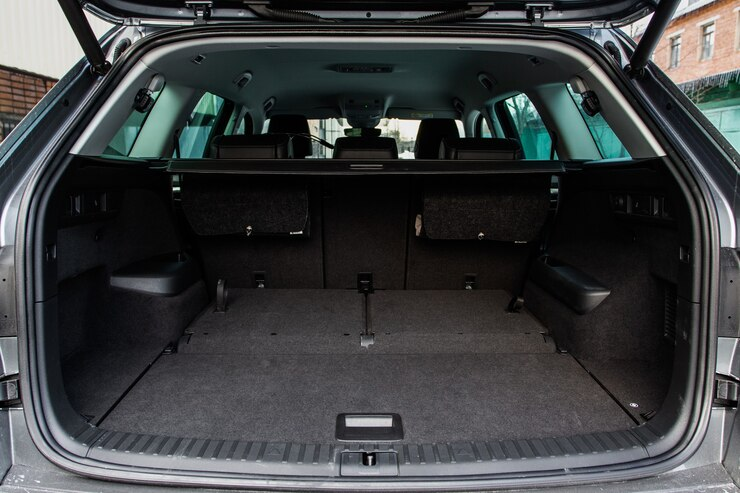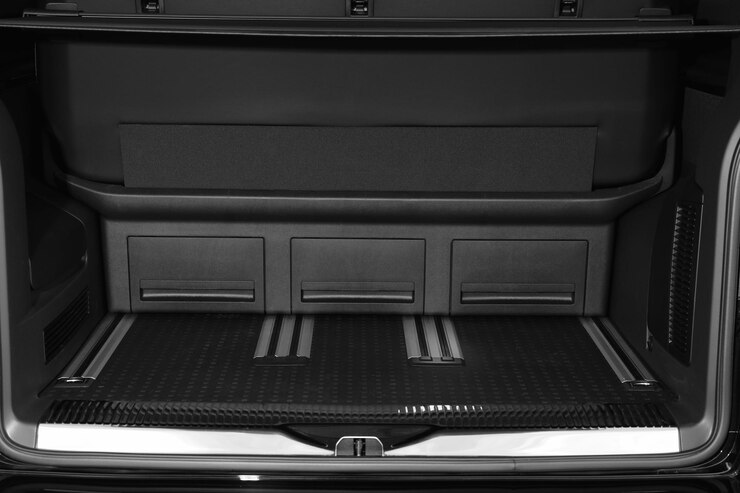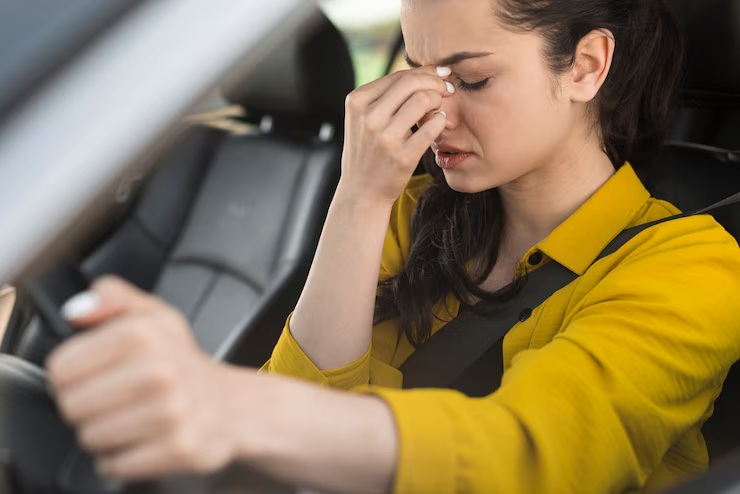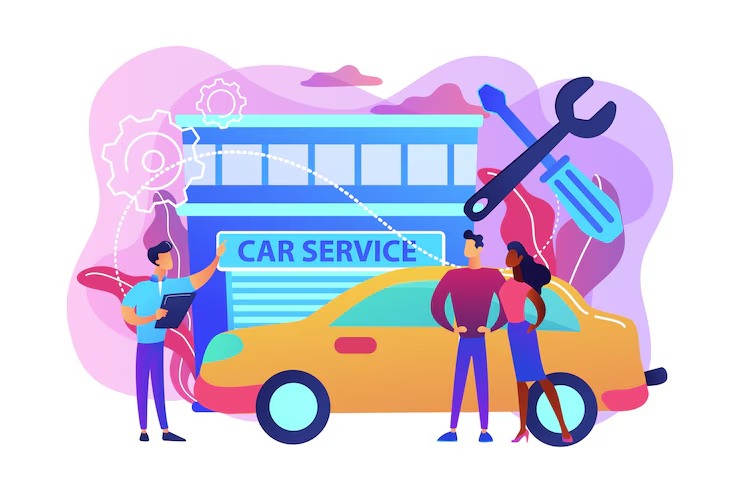
What to Use for Cargo Liner in Car:
Choosing the right material for a cargo liner can significantly enhance a vehicle’s protection and utility. Rubber and heavy-duty vinyl are among the top options for cargo liners, offering durability and easy cleaning. These materials help prevent spills, dirt, and damage from everyday use, ensuring the vehicle remains in good condition.
In addition to material selection, custom-fit liners provide a seamless look and effective coverage for different vehicle models. They not only enhance the vehicle’s interior aesthetics but also create a barrier against moisture and stains. Understanding the variety of available options makes it easier for vehicle owners to make informed decisions tailored to their specific needs.
Investing in a quality cargo liner is a simple step that pays off in long-term value and maintenance. By selecting the right material and fit, vehicle owners can safeguard their investment and improve the functionality of their cargo space.
Choosing the Right Cargo Liner

Selecting the appropriate cargo liner involves careful consideration of material types, fit with specific vehicle models, and maintenance needs. Each aspect plays a critical role in ensuring maximum protection and usability.
Material Considerations for Cargo Liners
When choosing a cargo liner, the material is crucial. Common materials include rubber, carpet, and plastic.
- Rubber: Offers durability and excellent water resistance. Ideal for those who transport liquids or messy cargo.
- Carpet: Provides a more aesthetic appeal but lacks waterproof capabilities. It may be suited for lighter use.
- Plastic: Known for its easy cleaning and waterproof characteristics. It is highly resistant to stains and wear.
Each material comes with distinct advantages and drawbacks. Evaluating the primary use of the vehicle assists in making the best choice.
Fit and Compatibility with Vehicle Models
The fit of the cargo liner is essential for optimal performance. A well-fitting liner prevents shifting during transit and protects the vehicle’s interior.
- Custom-Fit Liners: Designed specifically for particular models, ensuring maximum coverage and protection.
- Universal Liners: More flexible in use, but may not offer complete coverage. These may leave gaps where dirt and debris can infiltrate.
It is critical to review the vehicle’s specifications and choose a liner that fits securely and efficiently.
Maintenance and Care for Cargo Liners
Proper maintenance extends the lifespan of a cargo liner and keeps the vehicle clean.
- Rubber Liners: Require periodic cleaning with soap and water. They can also be hosed down easily.
- Carpet Liners: Benefit from vacuuming and occasional shampooing to maintain appearance and hygiene.
- Plastic Liners: Simple to maintain; wiping with a damp cloth suffices for most cleaning needs.
Understanding the maintenance requirements of each liner type helps make a more informed decision that aligns with personal lifestyle and usage patterns.
Car Window Tinting Insights

Tinted windows offer several benefits, including enhanced privacy and UV protection. It is important to also understand the legal limits for window tinting, which can vary by state and country.
Benefits of Tinted Windows
There are many advantages to installing window tinting on vehicles. Tinted windows can significantly reduce glare, making it easier for drivers to see clearly during bright sunny days. This reduction in glare contributes to improved driving safety.
Additionally, tinted windows block harmful UV rays, protecting both passengers and the vehicle’s interior from sun damage. This can help maintain the condition of upholstery and dashboard materials.
Another benefit includes enhanced privacy. Tinted windows deter prying eyes, making it difficult for others to view the inside of a car.
Finally, window tinting can improve temperature regulation within the vehicle. By keeping the interior cooler, it may reduce air conditioning usage, which can lead to fuel savings over time.
Legal Tint Limits and Regulations
Understanding local regulations regarding window tinting is essential. Each state has specific laws governing the darkness and reflectiveness of window tints.
Many regions allow front windows to have a certain percentage of visible light transmission (VLT), commonly ranging from 30% to 70%. Back windows often have more lenient rules, permitting darker tints.
Violating these regulations can lead to fines or the need to remove the tint. To avoid issues, vehicle owners should consult their local Department of Motor Vehicles (DMV) or relevant authority.
It is also important to note that cleaning products must be compatible with tinted windows. For instance, ammonia-based cleaners like Windex can damage tint films. A gentle, non-ammonia cleaner is recommended for maintaining visibility without harming the tint.
Odor Management in Cars

Managing odors in cars is essential for maintaining a pleasant driving environment. Identifying and eliminating specific smells can enhance comfort and preserve the vehicle’s interior.
Eliminating Cigarette Odors
Cigarette odors can linger considerably in vehicles due to their penetrating nature. To tackle this issue, multiple approaches can be effective.
- Deep Cleaning: Start by vacuuming seats, carpets, and any surfaces. This removes loose particles. Follow up with soap and water or a specialized upholstery cleaner on fabric surfaces.
- Odor Absorbers: Use activated charcoal, baking soda, or commercial deodorizers designed for cars. Place them strategically around the interior to absorb smoke odors gradually.
- Air Purification: Installing an air purifier inside the car can help eliminate persistent odors. Look for models specifically designed for automotive use.
- Professional Detailing: When in doubt, consider professional detailing services that specialize in odor removal. They have access to advanced equipment and techniques.
Addressing Gasoline Smells
Gasoline odors can arise from several issues, often indicating a leak or other concern. Identifying the source is critical for safety and comfort.
- Inspect Fuel System: Check for leaks in fuel lines, the fuel tank, or injectors. This should be done immediately as gasoline vapors are hazardous.
- Ventilation: If a gasoline smell persists, ensure the vehicle is well-ventilated. Opening windows can help disperse the smell while driving.
- Cleaning Products: Use enzyme-based cleaners to assist in breaking down the odors in affected areas, such as the floor mats or trunk.
- Professional Assessment: If the smell continues or seems to worsen, a mechanic should conduct a thorough inspection. This ensures safety and resolves any underlying issues.
Car Exterior Maintenance
Proper care of a vehicle’s exterior enhances its appearance and longevity. Addressing paint issues and maintaining cleanliness are crucial for preserving a car’s condition.
Addressing Car Paint Issues
Cars face various paint-related challenges over time. These include scratches, bird droppings, tree sap, and bug residue.
- Removing Tree Sap: A gentle approach is recommended. Use rubbing alcohol or dedicated sap removers, applying a small amount on a soft cloth. Carefully rub until the sap loosens.
- Dealing with Scratches: For minor scratches, a touch-up paint can be used. However, for deeper scratches, professional help may be necessary.
If a car is totaled but still drivable, it’s essential to evaluate the extent of the damage. If the exterior shows significant wear, repainting may be the best course of action.
Cleaning and Protecting Car Exteriors
Maintaining a clean surface can prevent lasting damage. Regular washing helps remove contaminants.
- Washing Routine: A two-bucket method is effective. One for soapy water and the other for rinsing. This reduces scratches while cleaning.
- Water Spots: To remove water spots, use a vinegar-water solution. Spray it on the affected area and wipe with a microfiber cloth.
- Protection: Waxing offers a protective layer, enhancing shine and shielding against UV rays. It should be applied every three months.
When considering a vehicle wrap, keep in mind that they can last anywhere from three to seven years with proper care. Regular maintenance ensures the exterior remains in prime condition, protecting against wear and tear.
Practical Considerations for Car Use
When considering a vehicle, it’s vital to examine both financial aspects and legal implications. Understanding these elements can help in making informed decisions regarding car ownership.
Understanding Car Finances and Ownership

Car ownership involves various financial responsibilities. Monthly payments, insurance, maintenance, and fuel costs must be considered. Leasing options are available, but terms may vary based on credit scores. For individuals with bad credit, some dealerships may still offer leasing options, but the conditions can be less favorable.
Another important factor is the vehicle’s mileage. A used car typically has mileage benchmarks that indicate wear and tear. Generally, a car with fewer than 12,000 miles per year is considered good. Beyond finance, insurance is a must-have and varies in cost depending on the vehicle type and driver’s history.
Navigating Legal Aspects of Car Ownership
Legal aspects include understanding the requirements for purchasing a vehicle. In many regions, a valid driver’s license is necessary to buy a car. However, there are exceptions in some private sales.
Additionally, car dealerships often decide their operating hours. Many are open on Sundays, but this can vary. It’s also crucial to know your rights regarding vehicle searches. Law enforcement requires a warrant for a search unless there are specific exigent circumstances. Understanding these laws contributes to responsible car ownership.
Car Upkeep and Cleaning
Regular upkeep and cleaning are essential for maintaining a vehicle’s appearance and longevity. This section will provide practical advice on effective washing, detailing, and interior cleaning techniques.
Washing and Detailing Your Car
Cars should generally be washed every two weeks to prevent dirt buildup and potential paint damage. A simple method involves using a bucket with water and car soap; avoid dish soap, as it can strip protective wax.
Detailing involves a thorough cleaning of every surface, both inside and out. This includes waxing and polishing the exterior, which protects the paint and enhances shine. Techniques like using microfiber cloths can prevent scratches while drying.
When detailing, pay close attention to the wheels and undercarriage. Brake dust and grime accumulate here, requiring a specialized cleaner and a brush to remove.
Interior Cleaning Best Practices
Cleaning car upholstery depends on the material. For fabric seats, using a vacuum first helps to remove dirt and debris. Then, a fabric cleaner can be used to treat stains; spot test any cleaner prior to full application.
Leather seats require different attention; a dedicated leather cleaner and conditioner should be utilized to prevent drying and cracking. A soft microfiber cloth can be used to apply these products gently.
The dashboard and panels should be wiped with a damp cloth, ensuring that no moisture is left behind. Additionally, using a gentle all-purpose cleaner on surfaces can help to keep everything looking fresh without damaging sensitive materials.
Specialized Cleaning Tips
For tough stains like coffee or ink, using a specialized upholstery cleaner can be effective. Follow the manufacturer’s instructions for the best results.
Windows benefit from a good glass cleaner and a microfiber cloth, which can minimize streaks. It is advisable to clean windows last to avoid re-depositing dirt from previous cleaning steps.
When washing tires, a dedicated tire cleaner can aid in removing built-up grime. Regular maintenance in cleaning these parts helps in maintaining performance and road safety.
By following these detailed guidelines, vehicle owners can ensure that their cars stay clean and well-maintained.
Safety and Emergency Information
Understanding safety measures and emergency responses in a vehicle is crucial. Proper knowledge can minimize risks and ensure a safer experience for everyone involved.
Responding to Car Emergencies
In a car emergency, remaining calm is essential. If a vehicle breaks down, the driver should move to a safe location, turn on hazard lights, and set up reflective triangles if available. Creating distance from traffic enhances safety.
In case of an injury, utilizing first aid kits is vital. Many kits include essential items like adhesive bandages, sterile gauze, and antiseptic wipes. For deeper cuts requiring stitches, urgent care facilities can provide necessary treatment without a lengthy wait.
During severe weather, knowing how to respond is key. If lightning strikes a car, occupants are generally safe inside, as the vehicle acts as a Faraday cage. Staying inside and avoiding touching metal components minimizes risk during storms.
Understanding Car Safety Features
Car safety features play a pivotal role in protecting occupants. These often include airbags, anti-lock braking systems (ABS), and electronic stability control (ESC). Knowing how these features work can aid in better decision-making while driving.
Airbags deploy upon collision, helping to reduce impact injuries. ABS prevents wheel lockup, allowing for better control during sudden stops. Understanding how to engage ESC can assist in maintaining traction on slippery roads.
In addition to passive safety features, modern cars might include advanced driver-assistance systems (ADAS). These systems offer functionalities like lane departure warnings and automatic emergency braking. Familiarity with these features enhances the overall driving safety experience.
Additional Car Services

Car ownership often requires various additional services to maintain functionality and security. Two crucial aspects are locksmith services for cars and regular vehicle inspection and maintenance.
Locksmith Services for Cars
Locksmith services play an important role in automotive care. Car owners may need assistance if they lock their keys inside, lose a key, or have a malfunctioning key fob.
Costs: Prices for locksmith services vary based on location and the complexity of the task. On average, it ranges from $50 to $150.
Timeframe: Most locksmiths can arrive quickly, often within 30 minutes, depending on traffic and distance. The job itself usually takes about 15 to 30 minutes.
Choosing a certified locksmith ensures expertise and reliability during these situations, providing peace of mind for vehicle owners.
Vehicle Inspection and Maintenance
Regular vehicle inspections are essential for safety and performance. Many regions require periodic inspections to ensure vehicles meet safety standards.
Duration: A typical inspection takes about 30 minutes to an hour. During this time, a professional checks the brakes, tires, lights, and emissions systems to ensure compliance.
Services: Auto care includes routine maintenance like oil changes, tire rotations, and fluid checks. This servicing helps extend a vehicle’s lifespan and maintain optimal performance.
Availability: Many automotive service centers offer flexible hours, including evening and weekend options, making it easier for car owners to schedule these essential services.
Vehicle Performance and Issues
Vehicle performance can significantly affect the driving experience. Maintaining engine health and diagnosing common issues can prevent complications that may arise over time.
Engine Health and Performance
The engine is crucial for a vehicle’s performance. Regular maintenance, such as oil changes and filter replacements, is essential. An engine typically holds between 4 to 8 quarts of oil, depending on its size.
If the engine runs poorly, it can be due to several reasons, such as faulty spark plugs or a clogged fuel filter. Engineers recommend using high-quality fuel to avoid engine knocking. Vehicles that experience frequent overheating may need a cooling system check.
Additionally, if the car shakes at idle, this might indicate engine misfires or imbalance. Addressing these concerns promptly can prevent further damage and maintain efficient performance.
Troubleshooting Common Car Issues
Common problems may include water leaks, heating issues, or hail damage. If a car is leaking water, it could result from a faulty seal or a clogged drainage system. Inspect the area around the windshield and sunroof for potential damage.
When a vehicle blows cold air instead of heat, the problem often lies in the thermostat or coolant levels. Ensuring the cooling system is functioning correctly can remedy this.
Repairing hail damage can be worthwhile if the vehicle’s structural integrity is compromised. Consulting with a qualified technician can provide clarity. Regular checks help prevent these common performance issues, ensuring the vehicle operates optimally.



